Birdwatching and epiphytes in the cloud forest
Birdwatching at El Bosque
After the night walk we booked a bird watching tour and fell asleep swiftly, only to rise before dawn to head out again for more wildlife, this time a dedicated birdwatching tour. After Sam’s success in La Fortuna these early morning tours, when the birds and wildlife are most active, and when the world isn’t so warm, are our best bet for seeing things. The guides also seem to be a higher quality, I guess it takes a certain level of dedication to be up this early for a tour.
In the back of our minivan pickup we ate our pizza leftovers for breakfast. Joining us on the tour, an American lady from Alaska, and a dutch couple with an interest in birds of prey. The spot wasn’t deep in the Monteverde cloud reserve, where trees are tightly packed together, where there are throngs of people and things are hard to see, instead we were taken to Hotel El Bosque, which isn’t a cloud forest, but where there are lots of fruit trees and early morning birds. We wouldn’t be seeing a Quetzal, but that box was already ticked.
Our guide was Andreas, a passionate birder, and excited about all species of birds we saw (he even had a peculiar excitement for pigeons – “look, look, a pigeon”). He had a good ear for the birdsongs and a keen eye to spot them. He carried with him a Leica scope, and was very good at getting it setup on target before the birds moved or flew away.
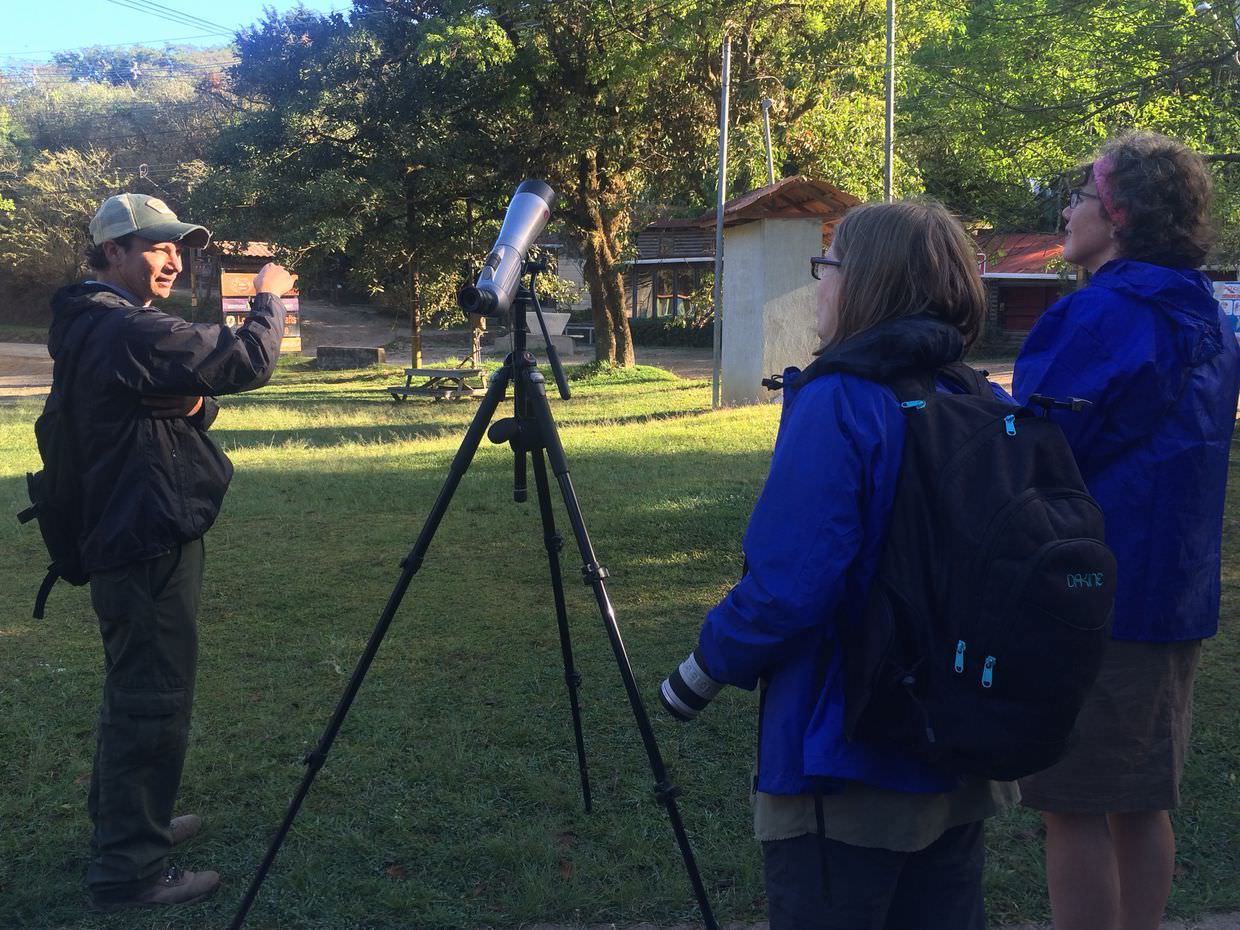
Just out of the minibus, and we heard the distinctive call of a bellbird, and then the calls of the emerald toucan. Andreas did his best to locate these for us, he marched us to where visibility was best, in the clearing, and with views of their favourite trees, but alas, they remained elusive.
We walked in a little figure of eight, not straying too far from the drop off, and not hiking into thick foliage, staying roughly in the same area – but always following the birds. And we saw lots of birds. Near some fig trees we watched as various flycatchers, brown jays, and chachalacas searched for their breakfast. There were large gangs of variegated squirrel fighting in the trees, and scaring off the little orioles and tanagers. A pair of Hoffman’s woodpeckers were nesting in one of these trees, and they were fighting courageously to protect their nest from these rampaging squirrels, who eventually moved trees for easier pickings.

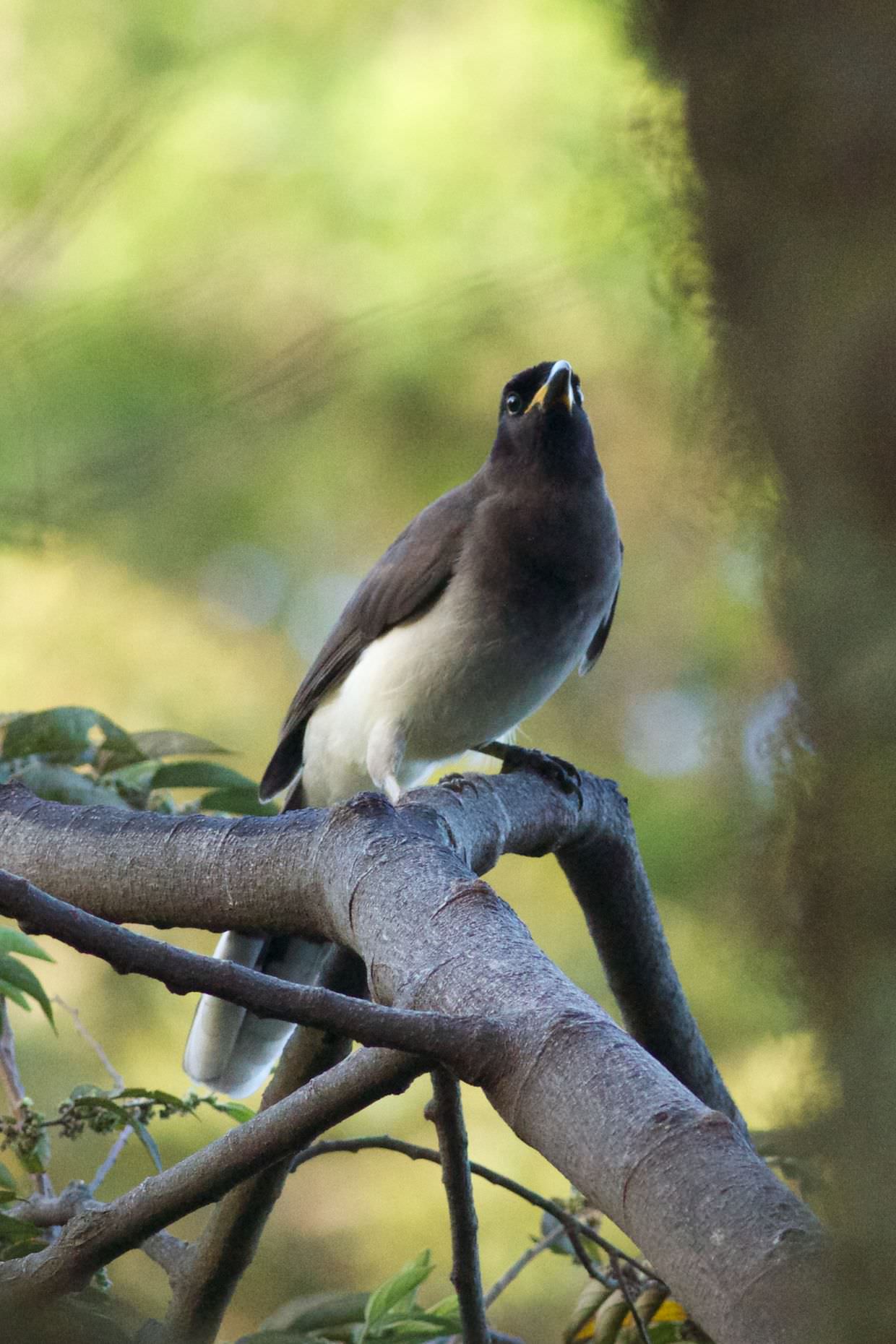
One of the more common birds you see in Costa Rica, often in flocks, is the great-tailed grackle, it’s not related to the crow or to the blackbird. They are an iridescent black with a purple sheen and brilliant yellow eyes. Their repertoire of song is impressive, and we heard them make sweet melodious calls, yet also more of those metallic and rusty noises that seem popular with birds in Costa Rica.

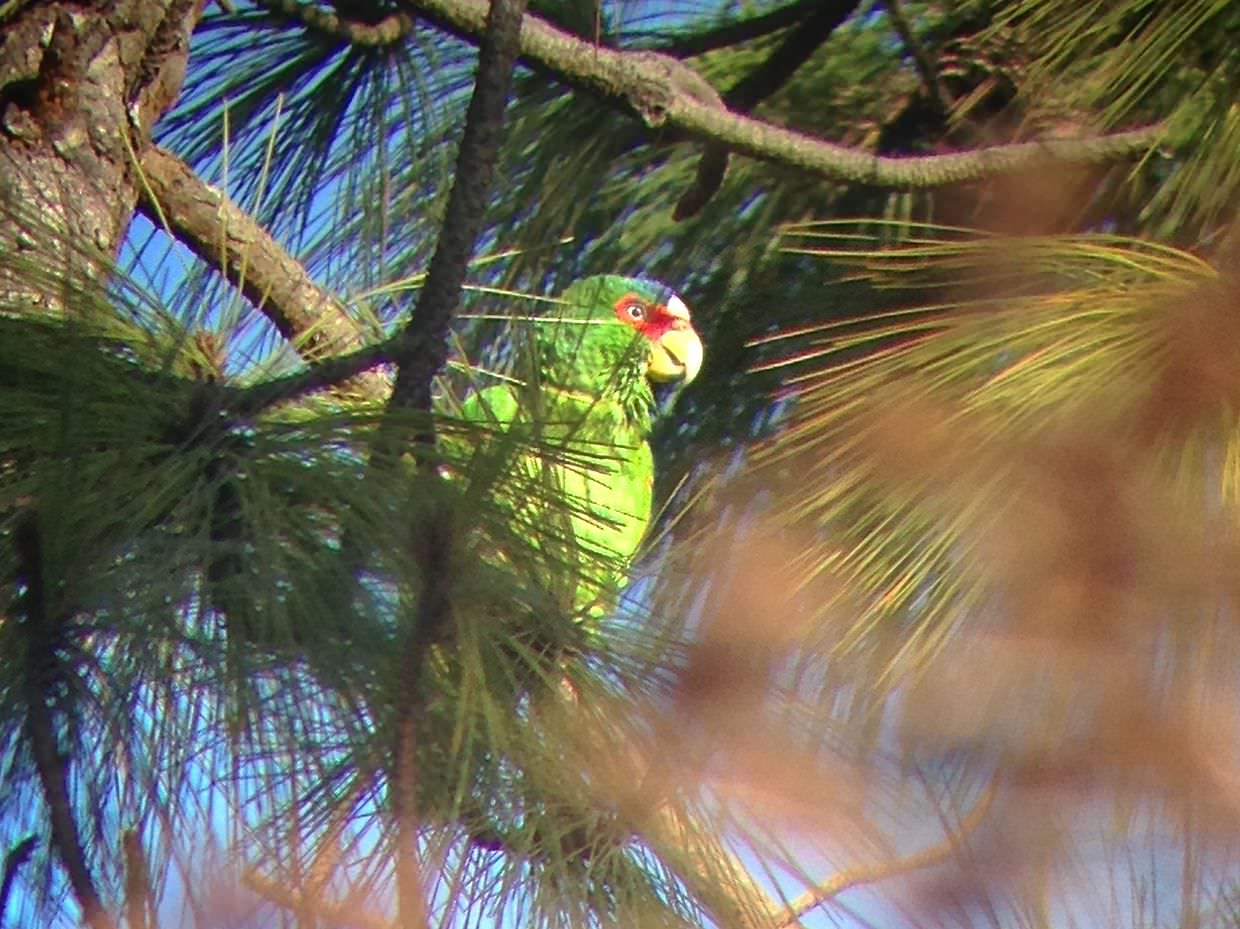
Birds aren’t all we saw. Some agouti were wandering around looking for morning scraps of food. We watched as a heavily pregnant female coati climbed down a tall tree trunk, head first; another coati was already on the ground, sniffing amongst the leaves for food. Sitting on a rusted old tractor was a green spiny lizard, warming up in the early morning sunlight. A wasp nest at the foot of a tree also had us intrigued, a 6-inch hole near the base of a trunk had hundreds of wasps buzzing about it.
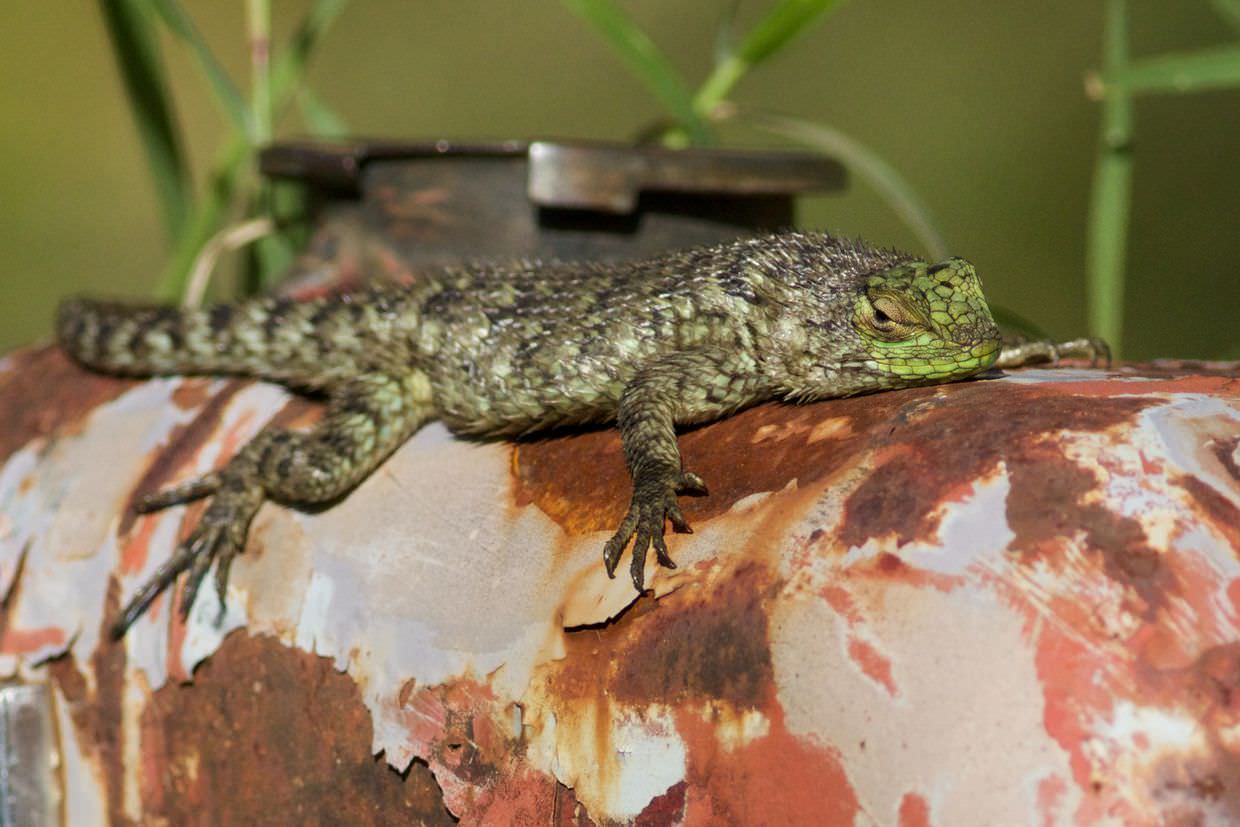
One of our favourites was the suave blue-grey tanager. While its neighbours dazzle with bright colours, this bird calmly oozes its own unique take on sophistication and grace. We love it. The most interesting bird was the summer tanager juvenile; the male is bright red, the female is green. Young males go through a stage where they develop their stunning male plumage, this one was half red on top and half red on bottom, with a mottled pattern creating a gradient between the two.

We returned to the Casem co-op for traditionally prepared coffee (using a chorreador) and gallo pinto, giving us a chance to write down all those bird species we’d just spotted:
- Grey-headed chachalaca
- Black vulture
- Red-billed pigeon
- White-fronted parrot
- Steely-vented hummingbird
- Blue-crowned motmot
- Emerald toucan (heard)
- Hoffman’s woodpecker, male and female
- Social flycatcher
- Boat-billed flycatcher
- House wren
- Brown jay
- Clay-coloured thrush (the national bird)
- Baltimore oriole, male and female
- Great-tailed grackle
- Melodious blackbird
- Yellow throated euphonia
- Yellow crowned euphonia
- Blue-grey tanager
- Summer tanager (juvenile)
- White-eared ground sparrow
Santa Elena Cloud Forest
There are two cloud forest reserves, the popular Monteverde one, and the very similar and much less visited Santa Elena one, “Reserva Bosque Nuboso Santa Elena”. We paid for a guided tour and had a pickup at 1pm (enough time for Samantha to nip into town and buy us some smoothies).
It is a community non profit project, located near Monteverde, Puntarenas, Costa Rica. The Reserve has an extension of 310 hectares, covered by a majestic Cloud Forest, in which you can observe a great variety of plants, Orchids, trees, ferns, heliconias and others. Also hundreds of residents and migratory birds, as the Quetzal and the Bell bird.
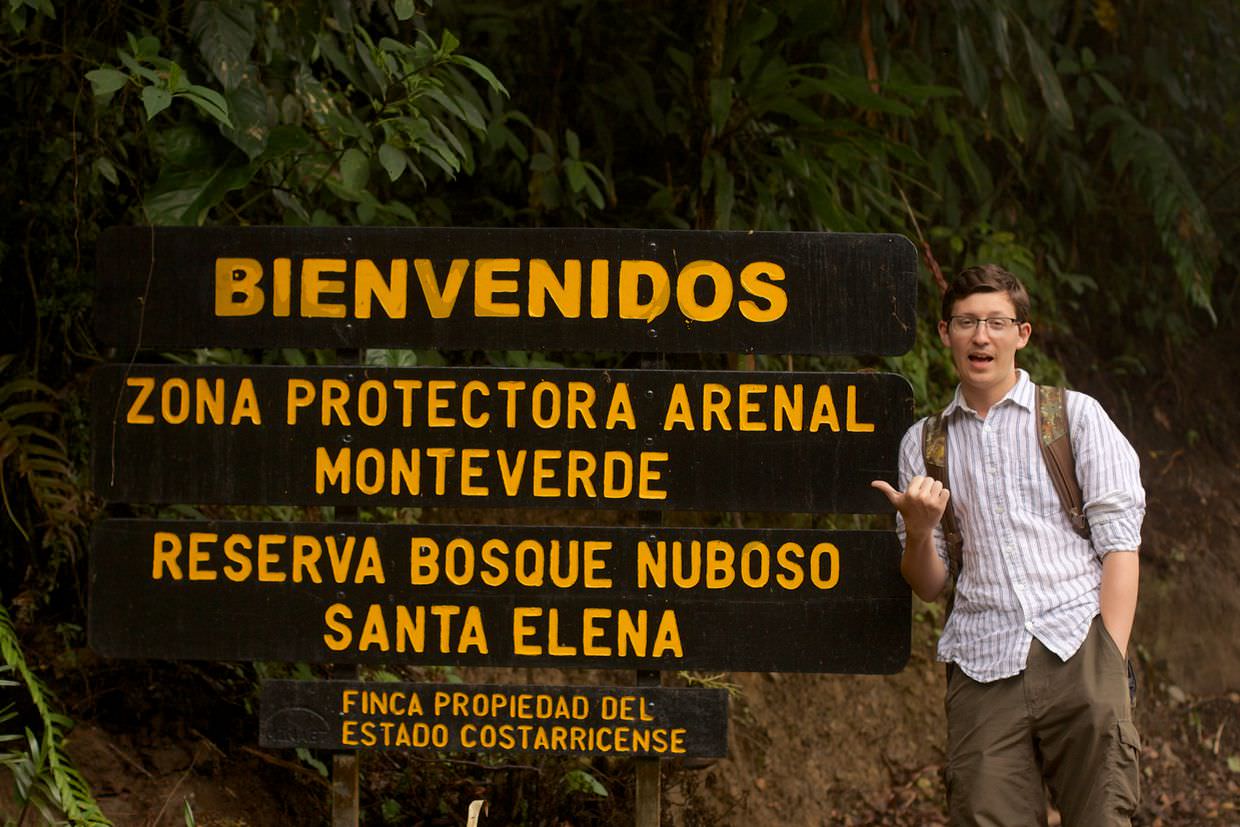
Our guide was Guillermo, he was the most knowledgable of all our tour guides, and while on this tour we wouldn’t see much wildlife or birds, mostly owing to the time of day, we found it to be one of the most interesting and informative. There was however a grey hawk at reception, sitting on a street lamp and looking out for its favourite meal, moths.
Epiphytes at risk
Before heading into the forest Guillermo showed us the epiphyte garden at reception, sometimes when a tree falls staff will pick up some of the plants that were growing on it and bring them here, for visitors to see. An epiphyte is a plant that grows harmlessly on another plant, pulling in all the moisture and nutrients it needs from the air rather than through roots in the ground. Because of the clouds, and the water and nutrients they carry with them, the trees are covered in epiphytes, such as orchids. The forest itself is only 2C cooler than the surrounding area, a little bit higher up, a little cooler, clouds form and a unique ecosystem flourishes. That 2C difference is at significant risk from climate change, Guillermo tells us that in 20 years, maximum 60, these forests will become rain forests rather than cloud forests, the epiphytes will die, plants like the philodendron will be replaced and the ecosystem will be gone. “It’s good that you are here to see it now”, he says painfully.
In the garden we saw a variety of orchids, all differing sizes, many with just a single leaf. “The leaves are very strong, and they protect the flowers from the wind”. One of our favourites was the “golden rain” orchid; old paintings by indigenous people depict this flower, and for a long time many thought those paintings were of birds rather than flowers. There were campanita flowers (“little bell”), designed for hummingbirds to come and take their nectar. And then there’s the “hot lips” flower (psychotria elata), the plant that looks like the Rolling Stones album cover, a pouting kiss with red lipstick; its leaves are modified to attract hummingbirds, later it changes to attract birds to eat its fruit and seeds. The common Amapola hibiscus was growing here too.
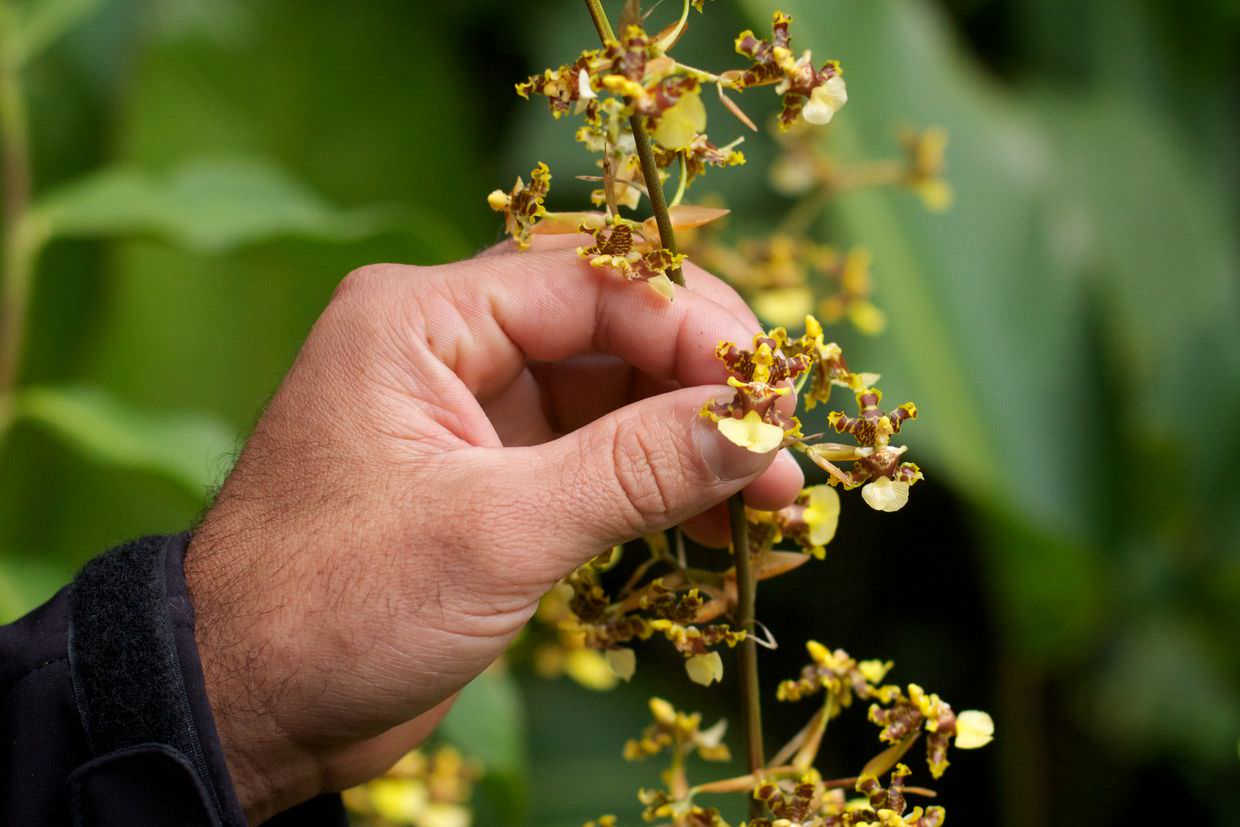
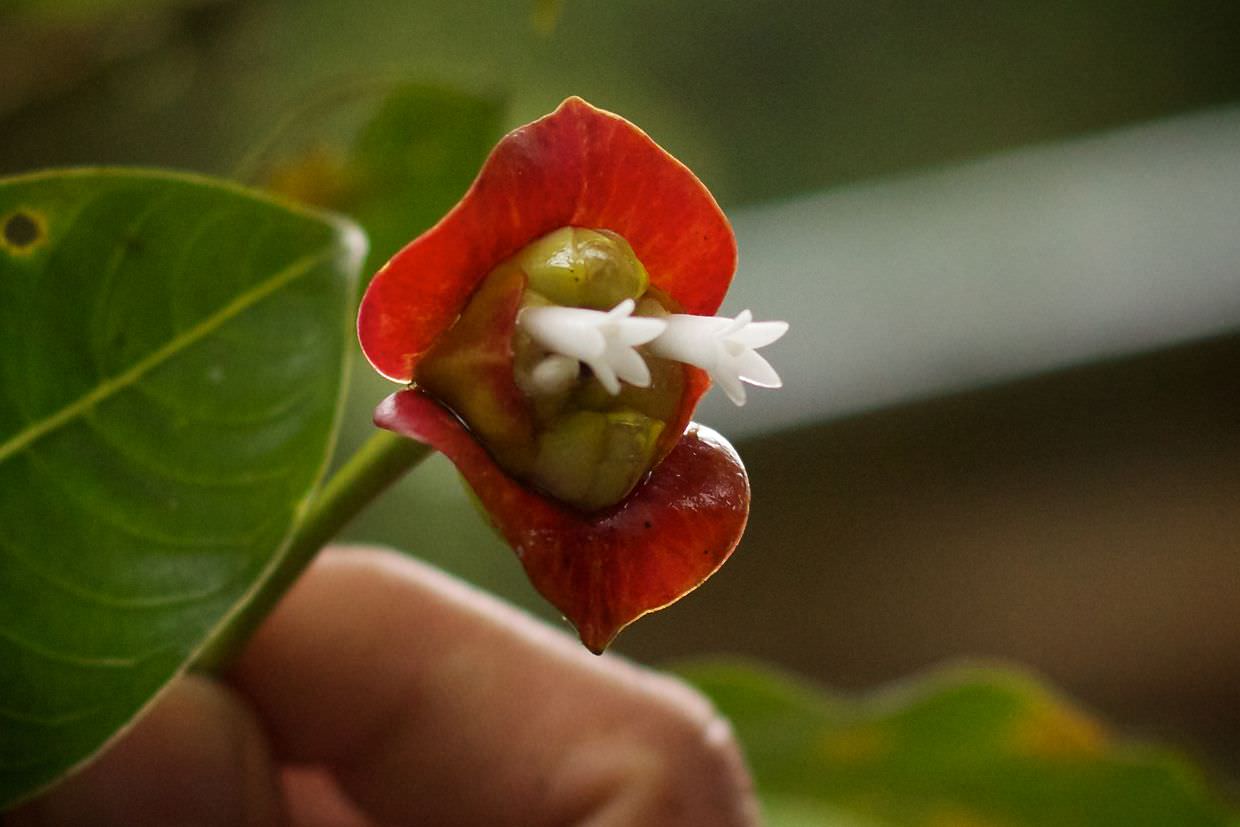
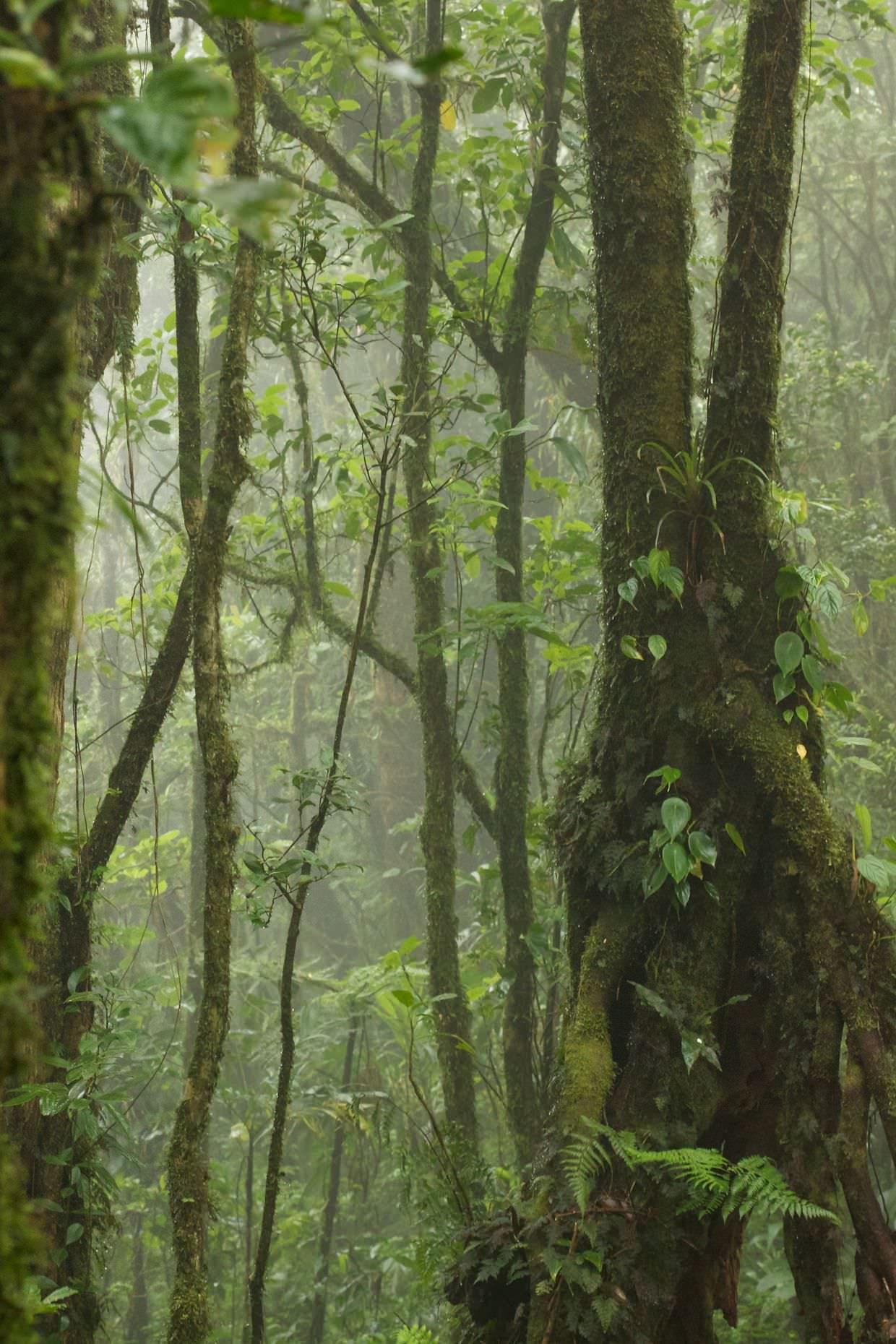
Moths and other bugs
Guillermo had to pick up his scope and gear from a hut near reception. Outside this hut we were treated to a selection of bugs that were attracted to its lights overnight. I assumed the moths we were looking at were dead, they didn’t move and were unresponsive, “they play dead”, Guillermo tells us – when they first wake up they can’t fly, they need to warm up, so playing dead is a defence mechanism. He goes on to point out that moths sleep with their wings open, unlike butterflies, and that they have fuzzy antennae. The larger moth was an owl moth (Automeris anikmeisterae), named after its two large “eyes”, which it uses to scare away predators. The second is currently unidentified.
There were other bugs too, a large cricket and a long-horned wood boring beetle with enormous antennae and piercing silver jaws – Guillermo illustrated how strong its bite was, but re-assured us that it wouldn’t bite us unless it had to.
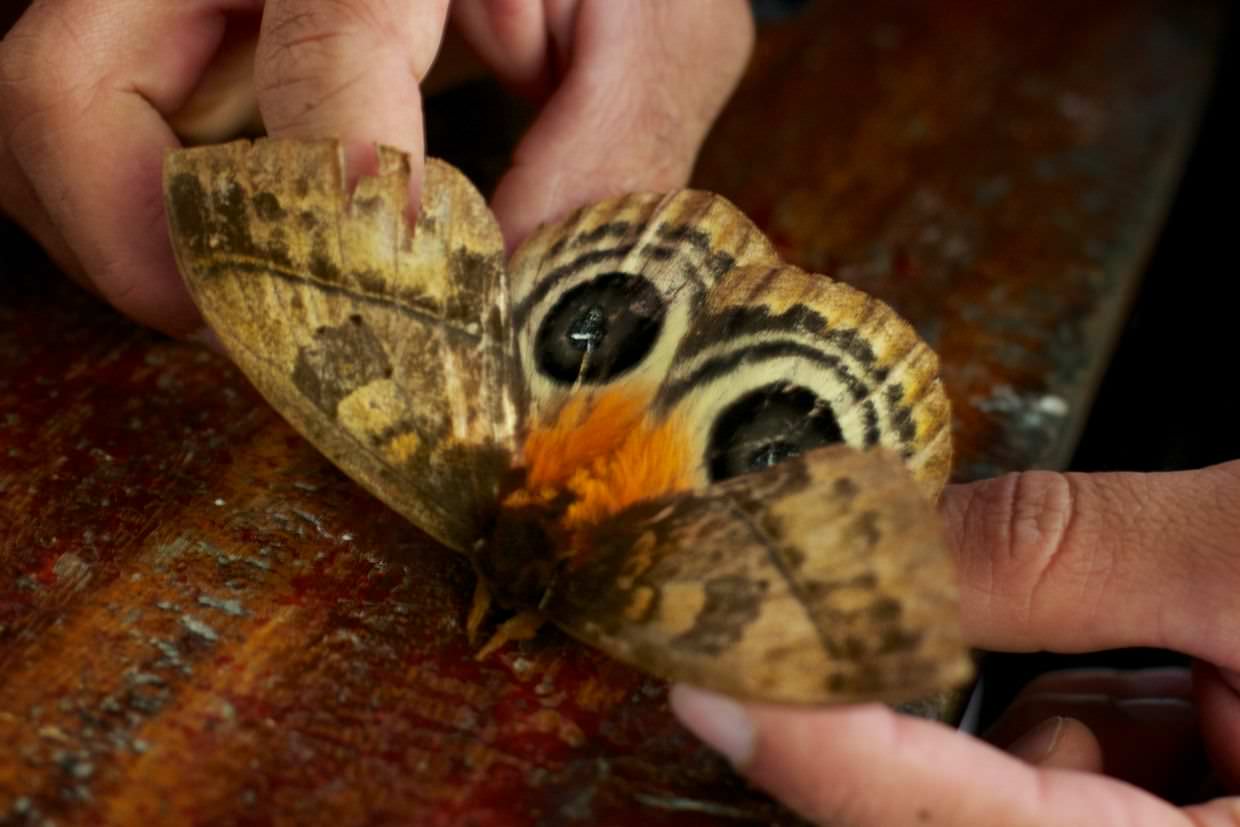
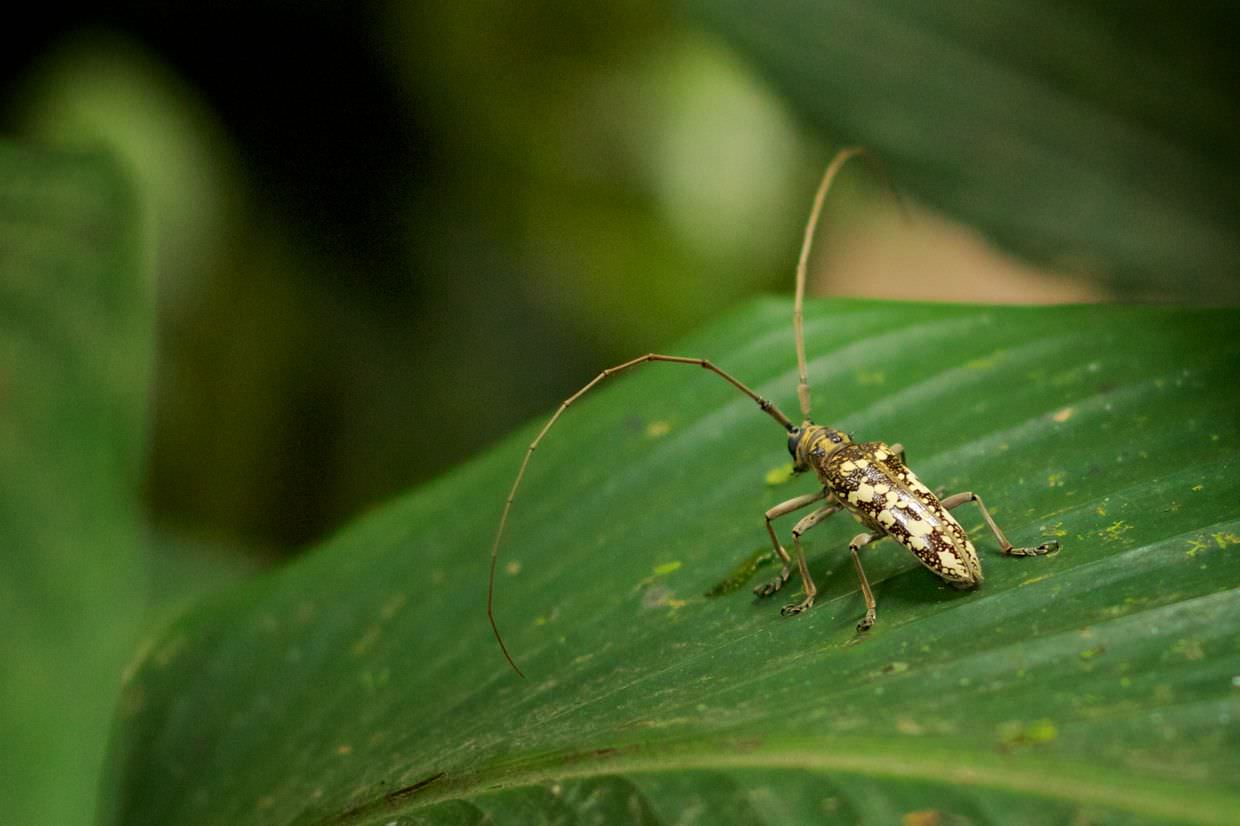
Encantado trail
We set off along the Encantado trail, a round trip that’s 3.4km long. The forests here felt wildly different to those in Cahuita; every tree, and every branch, is covered in moss and flowers, it’s like the trees have grown fur. The air is cool and humid, big trees are draped in vines and enshrined in mist, its a magical place unlike any other. On the ground, more tiny flowers, wild heliconia, ginger plants, orchids hanging from tree trunks, white peace lilies poke up out of the foliage, and spiral fern fiddleheads unwind in slow motion. There can be up to 1,000 plants in a single tree, and there’s over 200 different species. As we walked up and down, and followed the trail, the levels of mist changed. You could walk down a few steps and you’d drop out of the cloud level and visibility would return.
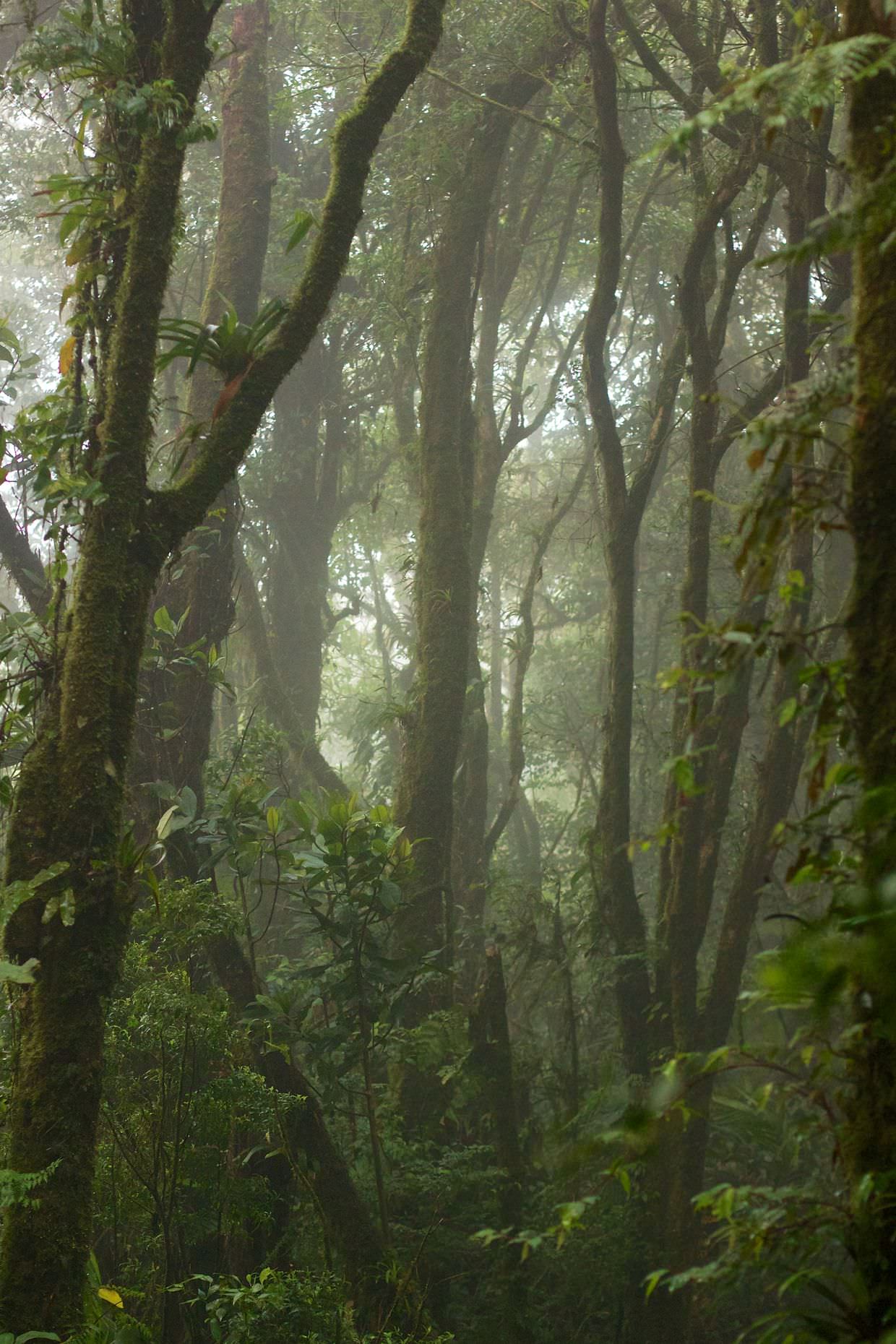
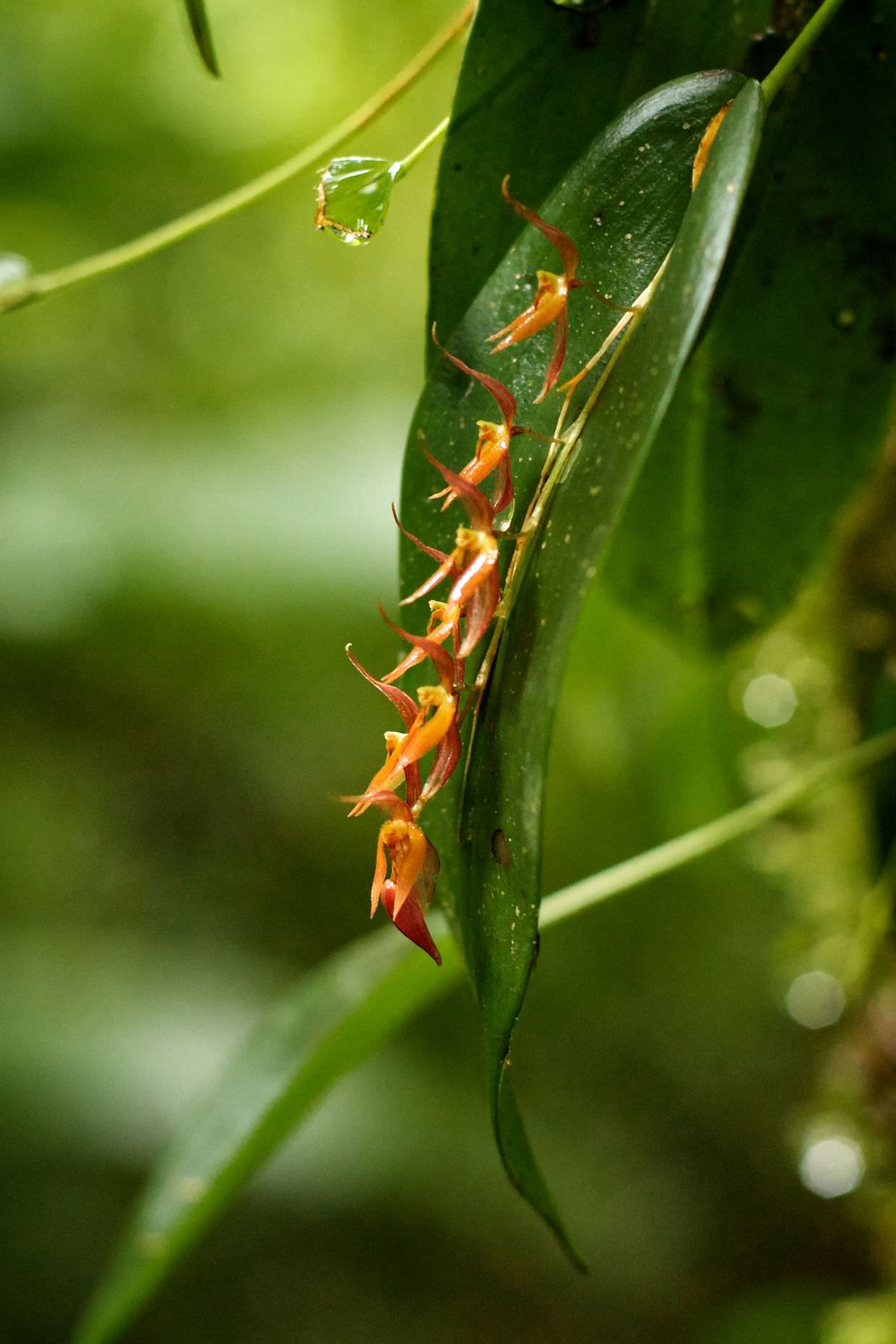
The air is filled with the noise of chirping crickets and singing cicadas, punctuated by the occasional metallic bird call from a black-faced solitaire or the mysterious bellbird.
At the base of a tree, where roots and mud were protruding, Guillermo told us about three types of spider’s web; the usual one that we see all the time, spun by the orb weavers, a second one that’s a little less common – a funnel web that leads prey to the spider, and thirdly, the most peculiar, like hanging tendrils, sticky strands of “fishing web” that sway in the air and catch unassuming prey. Soon after we had another opportunity to see an orange-kneed tarantula, a female waiting in her nest hole, a hole just off the path, at about ankle height; these spiders don’t need webs to catch their food, and for the females a lot of prey simply walks in. Another spider uses its web to roll up a leaf, creating a strong protected cylinder for its nest.
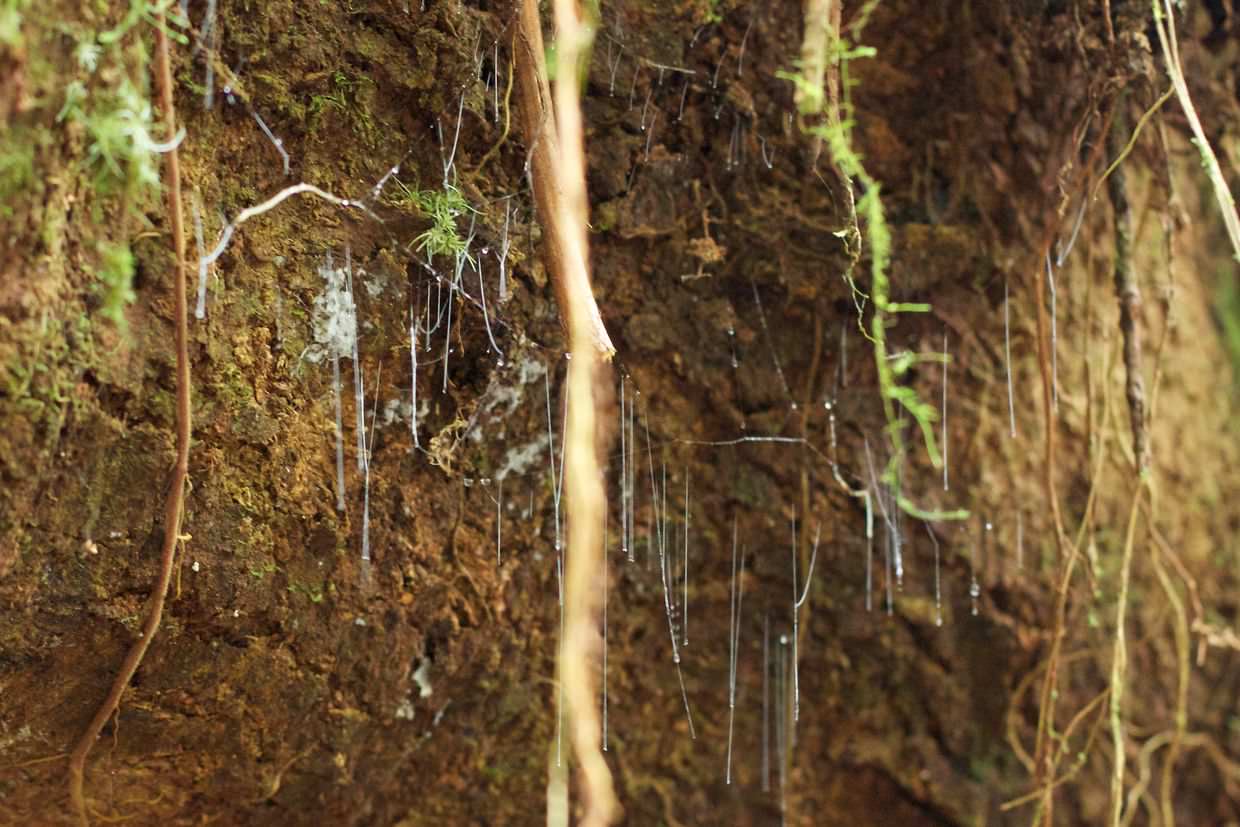
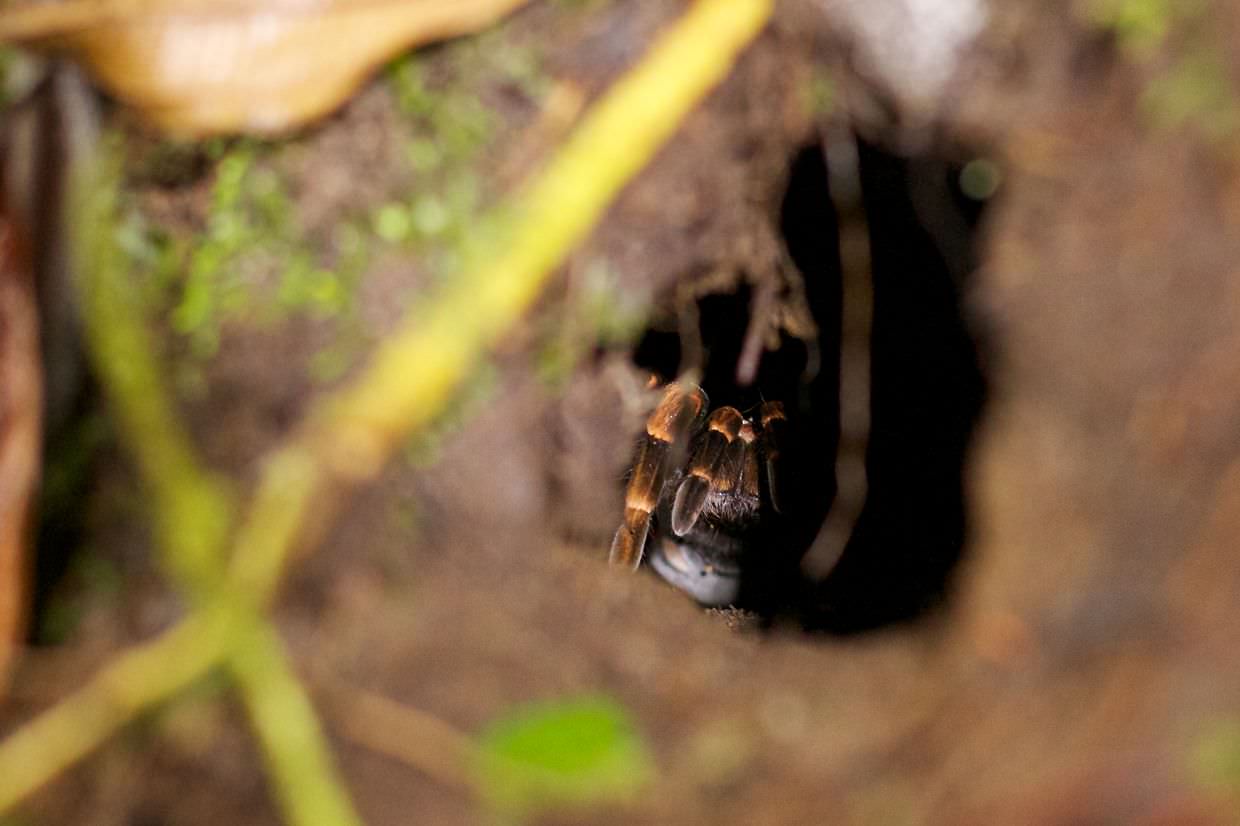
Trees here don’t have rings, there are no seasons, there are no changes in growth patterns; a felled tree looks peculiar, its age can only be determined with carbon dating. There were strange flowers too. The “little candle” is part of the black pepper family, they look like white waxy candles growing directly on the plant. They contain small seeds, like corn, and are one of the fruit bats’ favourite meals. Then there’s the red shrimp flower, (Tubular Cuphea appendiculata)
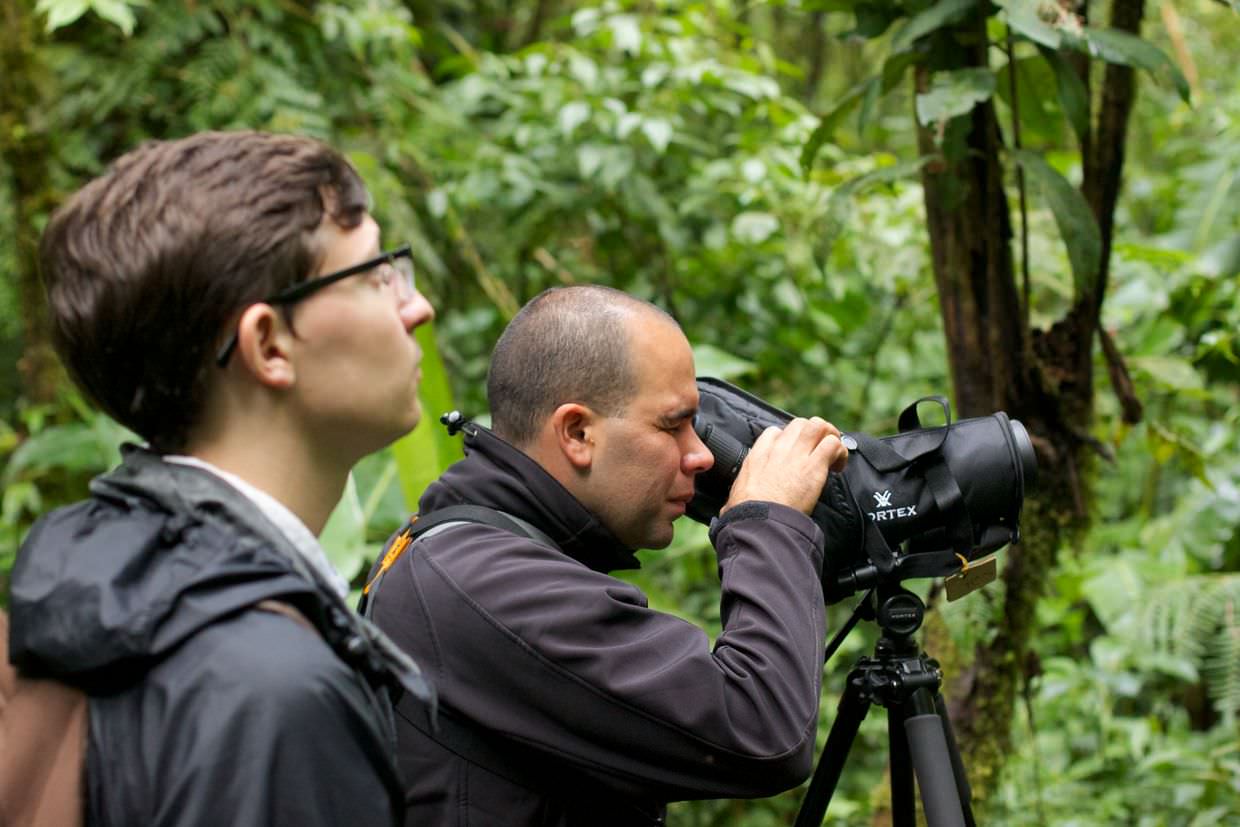
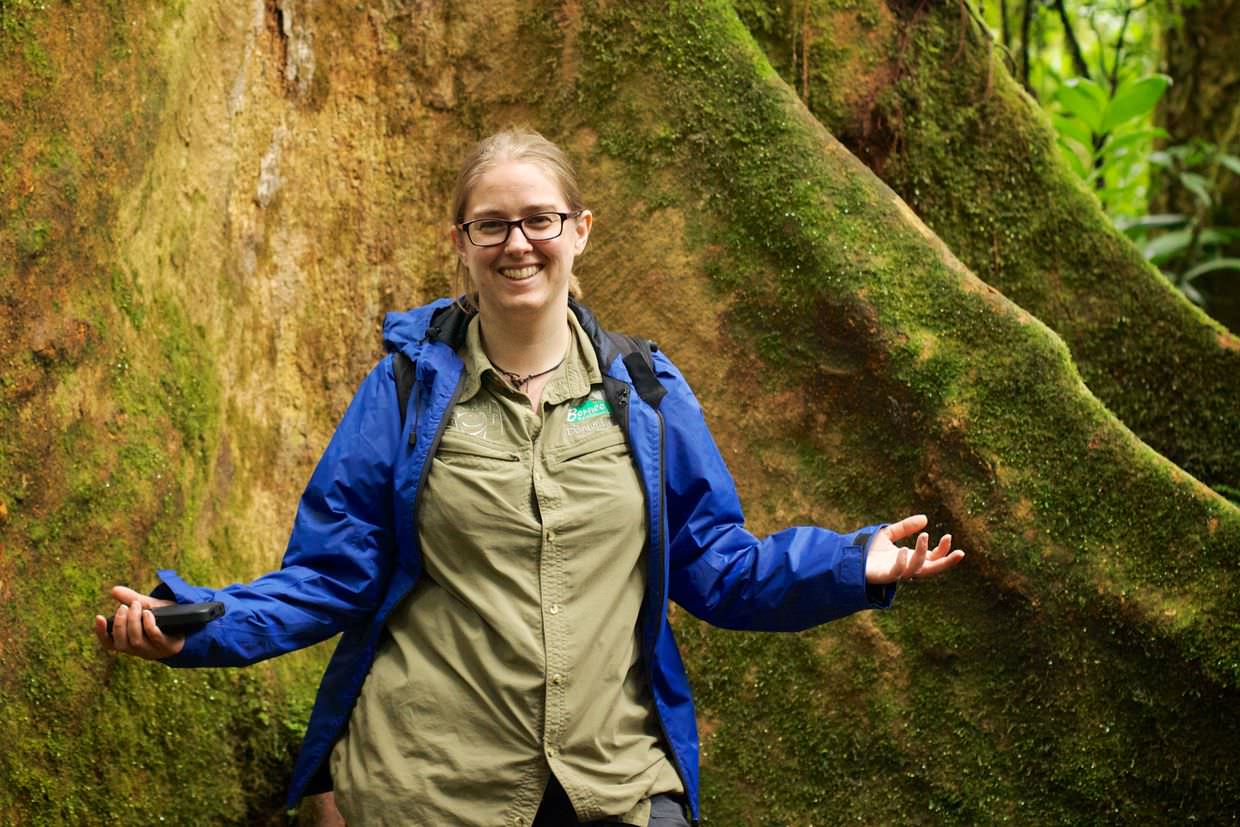
Like on the hanging bridges, we saw more tiny avocados, Guillermo explained that there are 96 types of avocado here, none of them are edible, well, at least not to us. Although, Costa Rica does grow another type of avocado to the usual Mexican variety, it’s bigger and “tastier”, you’d only need one to make guacamole. There’s very little that’s edible in the forest, fern fiddleheads are one of the most common edible plants; we tried some of these when we were in Borneo. Growing here too are wild coffee beans.
Going off-track
We’d walked this trek very slowly, to get us back to our pickup in time Guillermo took us off road, cutting through the foliage to a road, “a short cut”, he said. While trampling through the undergrowth we spotted a tiny dink frog. The road was open and muddy. Along the edge we could see small tracks made by wild boar as they enter and exit the forest.
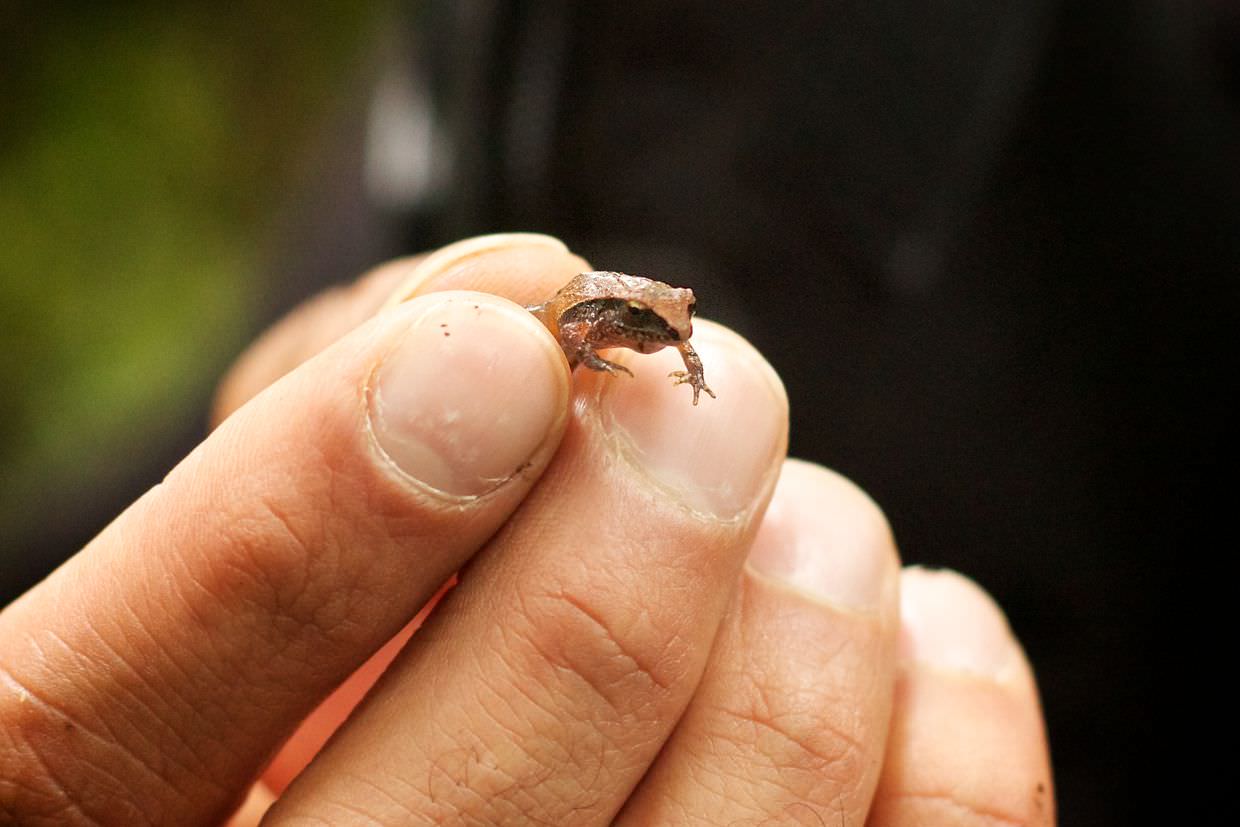
We talked a lot about Costa Rican politics, how the government has set up many programmes to encourage ecological tourism, reforestation and the protection of habitat. One of the local schemes is the involvement of school children in the charting and measurement of wild animals in the forests. They travel up to 3km off trail and setup camera traps; after a few months they return, change the memory cards, and then begin the exciting task of cataloguing what they’ve photographed. Guillermo says they’ve photographed 5 of 6 of Costa Rica’s cat species, the illusive exception is the Jaguar, which doesn’t live in this kind of forest.
We made it back in time for the bus, and enjoyed a bumpy transfer back to our hotel. In town it was like a different country; the clouds were gone and the sun was bearing down on us. Time for a nap.
Dinner at Trio
After two trips today we forwent another touristy Monteverde night tour in favour of a holiday dinner date. Three places in town stood out, and we opted for the fusion menu that Trio offered. The thought of a burger with fig fascinated me.
In a room decorated black and white, with triangles on the walls, we enjoyed a perfect evening. The cocktails were sublime, the fusion mains each worked perfectly – fig in burger, that’s something we’ll be trying at home; mojito shrimp, inspired.


On the way back we poked our heads into the famous Tree House restaurant, an establishment built around a tree, though we were too exhausted for more drinks, even if the menu did look quite inviting. It was a clear night again, and under the smiling gaze of the crescent moon, seen through the hanging banana leaves, we found it would soon be time to leave Monteverde. Our early morning pickup would be taking us to our last Costa Rica stop, Manuel Antonio. But for now we could enjoy the stars and the warm evening breeze.
